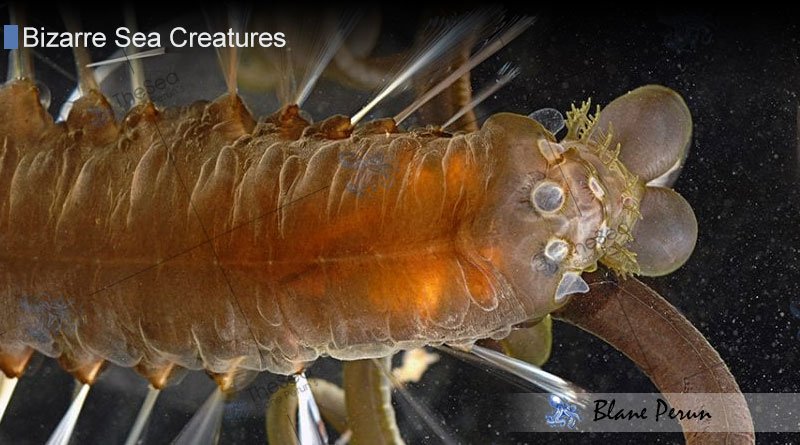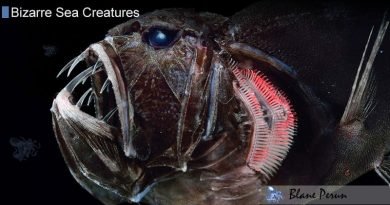Squidworm
Squidworm
The Squidworm (Teuthidodrilus samae) is one of the most extraordinary and alien-like creatures ever discovered in the deep sea. Found at depths of nearly 2,800 meters in the Celebes Sea—between the Philippines and Indonesia—this translucent marine worm inhabits the dark, high-pressure waters of the Coral Triangle. First identified in 2007 during the Census of Marine Zooplankton, the Squidworm has since fascinated scientists with its bizarre anatomy, graceful movements, and unique ecological role. Its blend of worm-like and squid-like features makes it a true marvel of deep-sea evolution, perfectly adapted to life in one of Earth’s most extreme environments.
Introduction: The Deep-Sea Hybrid
The deep ocean remains one of the least explored regions on Earth, and creatures like the Squidworm remind us just how alien life beneath the waves can be. This peculiar species combines the characteristics of both annelids and cephalopods, boasting long tentacle-like appendages that ripple through the water. Such adaptations not only aid in feeding but also in sensing chemical and physical changes in its surroundings. Like other bizarre sea creatures, the Squidworm showcases how evolution crafts life forms perfectly suited for survival in crushing darkness and frigid temperatures. Each new discovery of deep-sea species such as this expands our understanding of the complex ecosystems hidden far below the surface.
Physical Characteristics and Anatomy
Body Structure
The Teuthidodrilus samae measures approximately 9–10 cm in length and about 1 cm in width. Its semi-transparent, gelatinous body reveals its internal organs, creating an almost otherworldly appearance. This transparency serves both a defensive and ecological purpose—allowing the creature to blend into its dimly lit surroundings, avoiding predators while feeding on drifting particles. The Squidworm’s body is segmented, with each section lined with small bristles that aid in locomotion through the dense water layers of the deep sea.
Tentacle-like Appendages
One of the Squidworm’s most distinctive traits is its ten long appendages extending from its head. Two of these are specialized for collecting food particles suspended in the water column, while the other eight function primarily as sensory organs. These appendages give the worm its “squid-like” appearance and allow it to capture and manipulate food efficiently. The animal also features four pairs of gills that facilitate oxygen exchange in its oxygen-poor environment.
Sensory and Chemosensory Adaptations
In place of complex eyes or advanced vision, Teuthidodrilus samae relies on its nuchal organs—pairs of chemosensory pits that detect changes in the chemical composition of the surrounding water. This adaptation allows it to locate potential food sources and detect other organisms in near-total darkness. The sophisticated sensory system of the Squidworm rivals that of many other deep-sea creatures, such as the Crossota norvegica jellyfish, which also relies on unique biological sensors to navigate and hunt in extreme conditions.
Habitat and Distribution
The Squidworm is endemic to the deep waters of the Celebes Sea, located between the Philippines and Indonesia. This region, part of the biodiverse Coral Triangle, is characterized by immense depths, stable cold temperatures, and low light penetration. Living at around 2,800 meters below the surface, the Squidworm thrives in an ecosystem dominated by marine snow—a continuous shower of decaying organic matter that drifts from the upper layers of the ocean. Similar to how the Mariana snailfish has evolved to withstand crushing pressures, the Squidworm exhibits structural and physiological adaptations that enable survival where few creatures can endure.
Feeding Habits and Ecology
Diet and Feeding Mechanism
The Teuthidodrilus samae is a detrivore, feeding primarily on organic debris, decaying matter, and microscopic particles that drift down from the surface—collectively known as “marine snow.” The worm’s feeding tentacles sweep these tiny fragments from the water and deliver them directly to its mouth. Because of its slow movements and limited swimming ability, it relies on passive suspension feeding, floating through the water column and consuming whatever nutritious material it encounters.
Role in the Ecosystem
As a deep-sea scavenger, the Squidworm plays an essential role in nutrient recycling. By consuming decomposing organic matter, it helps sustain the delicate ecological balance of the abyssal zone. This makes the Squidworm a crucial participant in the global carbon cycle, contributing to the transfer of nutrients from the surface to the ocean floor. Its presence also supports other organisms that depend on similar detrital resources, forming part of a complex food web that includes species like the sea angel and other deep-sea invertebrates.
Behavior and Mobility
Unlike many worms that burrow or remain stationary, the Squidworm is a free-swimming species. It moves gracefully through the water column using undulating motions, giving it the appearance of a drifting cephalopod. This mobility allows it to cover a larger feeding area and avoid settling predators. Observations using remotely operated vehicles (ROVs) have shown that the Squidworm can change its position vertically within the water column, possibly in response to food availability or changes in water chemistry.
Scientific Significance and Discovery
The discovery of Teuthidodrilus samae in 2007 during the Census of Marine Zooplankton marked a major milestone in deep-sea exploration. The Squidworm’s combination of worm-like and squid-like characteristics challenged traditional classifications of marine animals and provided new insights into the evolutionary history of polychaetes. Its existence highlights the incredible adaptability of life and suggests that many more undiscovered species may inhabit the deep-sea zones of our planet. As deep-sea exploration continues, scientists expect to uncover additional information about the Squidworm’s reproductive behaviors, life cycle, and ecological interactions.
Conservation and Environmental Importance
Though the Squidworm’s remote habitat shields it from most human interference, it is not immune to the consequences of global change. Ocean warming, acidification, and pollution from microplastics can affect the fragile ecosystems of the deep sea. Protecting biodiversity in regions like the Coral Triangle is vital to preserving species such as Teuthidodrilus samae. By studying the Squidworm and its adaptations, scientists can better understand how deep-sea life responds to environmental stress, informing broader marine conservation strategies.
Conclusion
The Squidworm (Teuthidodrilus samae) stands as a striking example of nature’s creativity and resilience. Its hybrid appearance, delicate feeding behavior, and mysterious existence in the ocean’s twilight depths remind us of how little we truly know about life beneath the surface. As technology advances and humanity explores deeper into the abyss, creatures like the Squidworm continue to redefine our understanding of evolution, adaptation, and the astonishing biodiversity that thrives in Earth’s final frontier.




